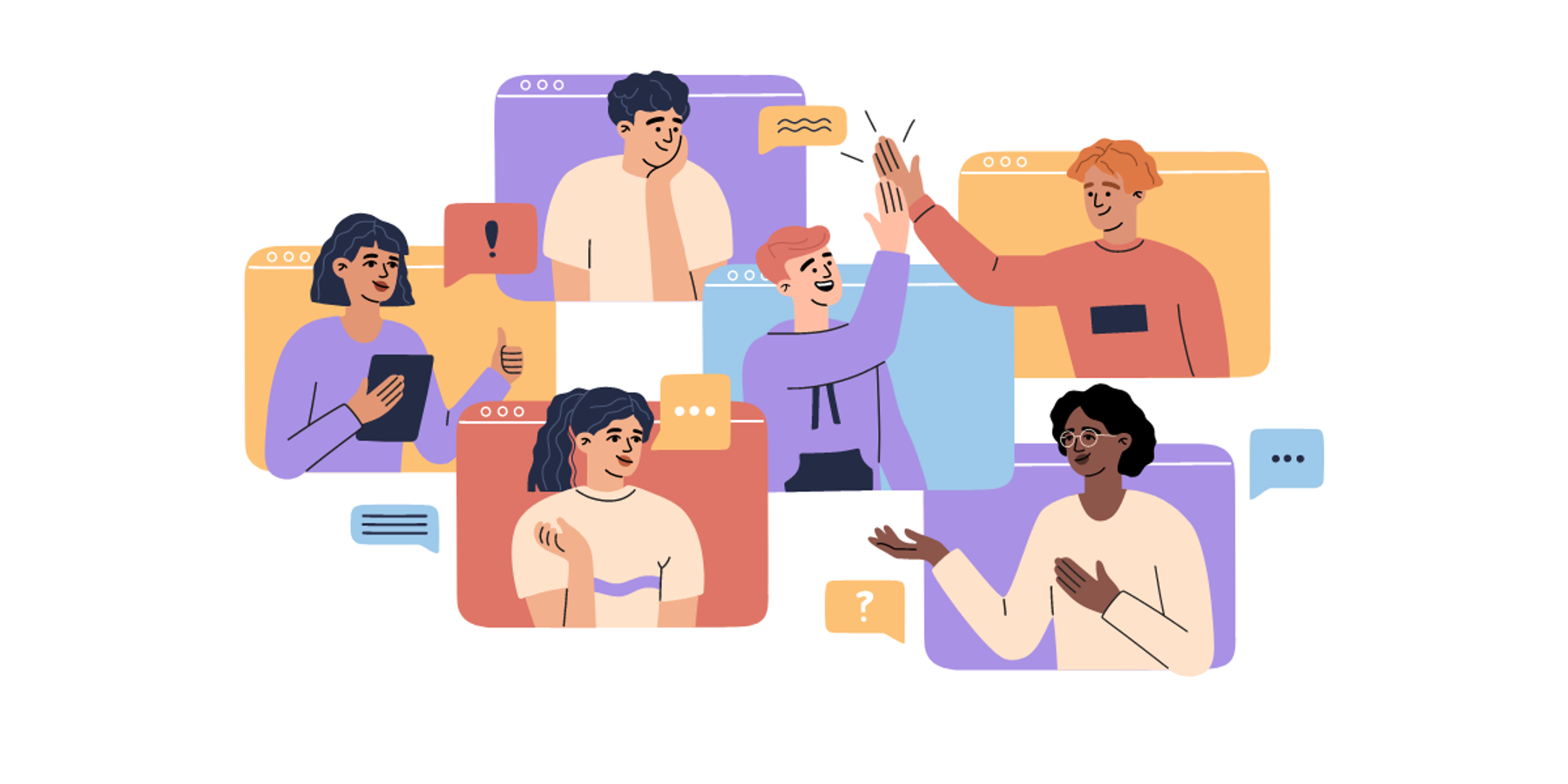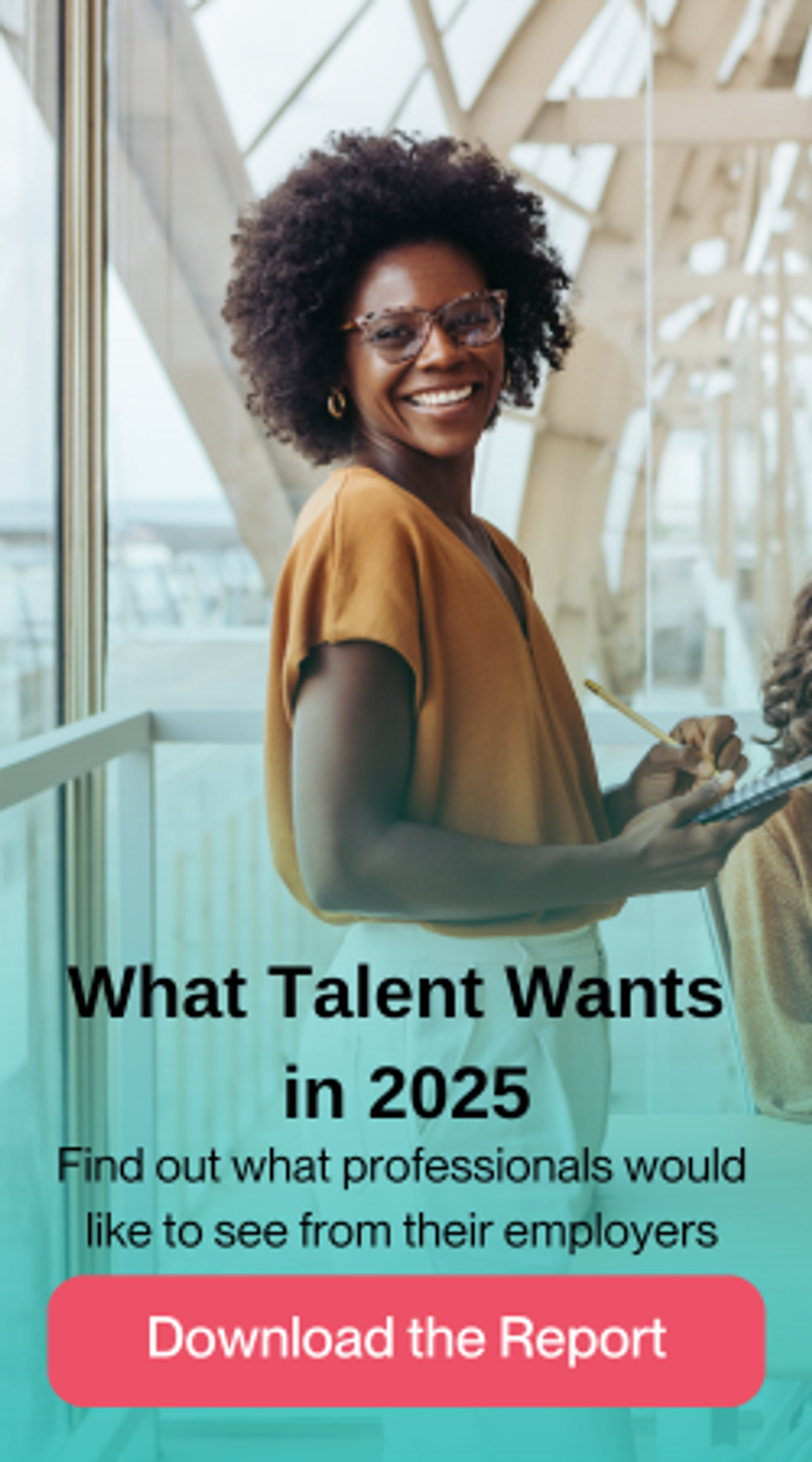Diversity — in our workplaces, schools, healthcare systems, and communities — is like a shooting star. As a moving target, it can be hard to pin down. But with the right diversity, equity, inclusion, and belonging (DEIB)-informed tactics in our tool belt, it’s a target we’re increasingly able to move toward, inch by inch.
Contemporary standards of diversity are all about empowering people, recognizing and respecting differences, and welcoming every unique contribution, including in our working lives. As businesses large and small have moved from surviving during peak pandemic times to thriving, expectations for the way we work — as well as for the way we prioritize and foster DEIB — have fundamentally shifted.
Below, we break down the ways diversity touches on every aspect of healthy and fruitful workplace cultures in 2025 and beyond, and we’ll also unpack some ways to be a true industry leader within workplace DEIB.
In this guide:
- Diversity meaning
- Why is diversity important in the workplace?
- Benefits of diversity in the workplace
- How to get started with diversity in the workplace in 2025
Diversity meaning
In the United States, diversity is often associated with race and ethnicity, but these aren’t the only markers we use to distinguish ourselves from one another. Our diversity definition refers to the full variety of people or groups that exist in a place or an organization, and who bring their unique identities to it — across races, ethnicities, genders, sexualities, abilities, ages, nationalities, ideologies, religions, languages spoken, levels of education, and socioeconomic statuses. All of these are dimensions of diversity that inform how we identify, how we’re seen, and how we show up in the world.
People with different backgrounds and identities living and working together is a universal, centuries-old human puzzle. As a sociopolitical concept, diversity informs culture, social and political movements, economics, and the health of the communities we live in. In the way we approach everything from city planning to organizational structures, true attitudes toward diversity are often evident — and, in both the past and present, are too often unwelcoming. Racism and xenophobia are oppositional responses to diversity. This, when we know that diversity is a necessary ingredient for resilience in both the natural world and the business world. In everything from health systems to housing, diversity leads to more innovation and creativity and better problem-solving, too.
The opposite of diversity and inclusion: marginalization and intolerance
We can also frame diversity and inclusion as reactions against marginalization and intolerance. In any society, power is acquired and maintained by privileged social groups, sometimes without their awareness. These groups are in a position to determine who is and who is not an accepted and resourced part of this society. Intolerance and exclusion become tools to maintain the power of ruling groups.
Inequalities in society and exclusion from social systems leads to the marginalization of people. Broadly, this could be exclusion from political processes, social spheres, and economic participation. Marginalization is often closely associated with poverty.
Ultimately, diversity and inclusion are active efforts to challenge intolerance, exclusion, and marginalization.
Diversity and combatting discrimination
Diversity calls for an active, ongoing process of combating discrimination. A lack of diversity leads to discrimination, which has severe impacts on individuals and on society. Research from the Equal Employment Opportunity Commission found that workplace harassment and discrimination is more likely to occur in workplaces where there is a lack of diversity. Meanwhile, a study conducted in France proved that the more people see diversity, the less likely they are to discriminate and lump all individuals of a certain identity together.
Researchers in that study displayed a poster across 24 high school classrooms showing photos of different Arab people next to personality-trait captions — “too chatty,” “an excellent handyman,” “stingy,” and “optimistic,” to name a few — alongside the words: “What makes us the same… is that we are all different.” Weeks later, students in those classrooms were found to have more positive attitudes toward Arab people and saw them as more variable than students whose classrooms did not include these posters.
Much like in the classroom, being able to see individuals with different identities and backgrounds at all levels of a company helps foster workplace diversity, inclusion, and acceptance. Discrimination and exclusion at work, meanwhile, cause employees to disengage. This employee disengagement costs the global economy $7 billion per year. Frankly, it’s bad both for business and for people.
Types of diversity in the workplace
To cultivate inclusion and combat disengagement, companies can adopt specific strategies to foster diversity in the workplace. These efforts are often referred to as Diversity, Equity, and Inclusion (DEI) initiatives or strategies. At PowerToFly, “belonging” is an essential fourth dimension, and thus the term DEIB is what we use. DEIB efforts are ideally intended to be holistic. They reach across departments and functions to improve every aspect of an employee's experience and a company’s function.
A diversity recruitment strategy is a set of policies, actions, goals, and measures used to attract, evaluate, and hire diverse talent. It’s the first step in an organization’s overall DEIB strategy.
As a practice, DEIB recruitment actively seeks to hire and retain people with a variety of different:
- cultures,
- races,
- identities,
- religious views,
- genders,
- sexual orientations,
- intellectual and physical abilities,
- religions,
- neurodivergences,
- socio-economic classes,
- languages,
- and nationalities.
With a diversity of talent at all levels of an organization, inclusion and belonging can play a crucial part in retaining this diversity on every team.
Why is diversity important in the workplace?
It’s important to remember that companies are made up of people. Happy employees provide continuity and sustainability at many levels. To truly understand the human benefits of diversity in the workplace, let’s envision the opposite: a homogeneous team. Everyone looks the same, thinks the same, comes from the same background, and reacts to challenges the same.
We might imagine some kind of efficiency like a hive of bees or the Borg in Star Trek. How much does the company lose without a surplus of innovation? Creativity? Adaptability?
Imagine introducing one different person into this homogenous hive of a company. Their actions, clothing, and ideas are constantly questioned for being different. They experience constant microaggressions or outright harassment in order to keep them in line. Is that employee going to be engaged and productive at work? What kind of customer service will that employee provide? Will that employee stay? Will the customers from that employee’s community feel catered to, or will they be loyal to another brand?
The separation described above by homogenous teams fuels discrimination and conflict. Fostering diversity reduces it. Diverse teams make better decisions and are more profitable and more productive than homogenous teams. Simple.
The primary goal of diversity efforts in the workplace is to create an environment in which employees feel invited to bring their full, authentic selves to work, knowing they’re safe to do so and will be valued and respected for their unique contributions.
Statistics about diversity in the workplace
Discrimination
- In 2021, there were 61,331 total workplace discrimination cases filed with the EEOC. The most frequent types of discrimination cases filed were based on age, disability, race, and sex. (Meanwhile, we know that much workplace discrimination goes unreported.)
- 46% of LGBTQIA+ workers have experienced unfair treatment at work.
- 49% of transgender workers report having been fired or not hired due to being trans.
- 73% of Latinos in the U.S. say skin color impacts career progression, and 54% of darker-complected Latinos don’t believe their work evaluations reflect their performance.
- Up to 80% of neurodiverse people have trouble finding employment.
- Black employees are 23% less likely to say they receive “a lot” or “quite a bit” of support to advance at work, 41% less likely to view promotions in their workplace as fair, and 39% less likely to believe their company’s diversity and inclusion efforts are effective, compared to white colleagues at the same company.
Attitudes from employees
- 80% of employees say inclusion is important when choosing an employer.
- 83% of millennials are more likely to be actively engaged if they believe their company fosters a diverse and inclusive culture.
- 75% of employees see diversity programs in place, but feel no effect.
- 44% of women wouldn’t work for a non-inclusive organization.
- 50% of employees want their workplace to do more to increase diversity.
Effects of diversity
- Companies with inclusive cultures have 22% lower turnover and 39% higher customer satisfaction.
- Gender-diverse teams are 15% more likely to have financial returns above industry means.
- Companies with racially and ethnically diverse teams are 35% more likely to have financial returns above industry means.
- Diverse companies are 70% more likely to capture new markets.
- Gender parity across workplaces would increase global GDP by 26%.
- Inclusive companies get 2.3 times more cash flow per employee.
- Companies that rank as more inclusive are 1.7 times more likely to be innovative and 1.8 times more likely to be change-ready.
Common workplace diversity mistakes
What’s just as important as implementing successful DEIB strategies? Recognizing their failures. For instance, early efforts at improving diversity in the workplace saw phenomena like tokenism occur. The common mistakes to avoid when implementing DEIB strategies can be summarized in three categories:
- Not communicating with your people. No single person in the company is a lone diversity expert. Even your DEIB coordinator is not the source of all diversity knowledge. Think of them more as a gatherer of information, a convener of opinions, and an asker of questions. Instead of presuming to know what employees from underrepresented groups need, create spaces for each employee to have a voice. Company town hall meetings, anonymous surveys, team-building activities, and check-ins are all great times to gather feedback.
- Not moving DEIB work out from the HR silo. You can’t build, implement, and reinforce company culture from a single department. Diversity is important for every team, not just the ones that have a touchpoint with HR. Make DEIB a part of every job function, every team, and the way every leader's performance is measured.
- Not having buy-in at every level. From the newly hired specialist to the CEO and board of directors, every person needs to be on the same page. Diversity is not something that can be pushed through. It should be a priority that everybody takes on.
Benefits of diversity in the workplace
Two main benefits of diversity in the workplace are (1) happier people and (2) more productive and innovative work cultures. Both aspects are equally important to business. We’ve addressed how happy, fulfilled employees provide sustainability. Now, let’s see how money talks. Boards tend to focus on the workplace diversity practices that push profit. When it comes to business performance, let the data do the talking. Here are the major business indicators that will show improvement with higher diversity in the workplace.
Higher profits.
The business case for increasing workplace diversity has been made over and over. Gender, racial, and ethnic diversity have a clear correlation with profitability. Consumers prefer to do business with companies that align with their values, and DEIB initiatives don’t alienate anyone. This applies to all levels, too — diverse management teams lead to 19% higher revenue. The bottom line: Workplace diversity attracts both revenue and efficiency.
Increased market share.
Diverse companies are 70% more likely to capture new markets. Why does a diverse company know its market better? By building teams from those communities. The more diverse your teams, the better your chances that your company can cater to the needs of your customer base. Diversity is often framed as matching up your staff to diverse demographics of the population. Hiring for diversity brings your customers’ needs on board naturally, rather than sinking budgets in R&D efforts.
Better employee retention.
Nearly 80% of workers want to work for a company that values diversity, equity and inclusion. This is where belonging comes in yet again. Staffers that feel they belong stay. Those that don't, leave. Fifty percent of employees who report feeling undervalued at work say they intend to look for a new job within a year. Ninety-three percent of employees who feel valued also feel motivated to do their best work. The employers of those happy staffers report an 11% average turnover rate — much lower than the national average of 36%. Knowing how costly replacing an employee is, seek out proven employee retention strategies with diversity at the forefront.
More authentic teams.
Forty-seven percent of millennial employees actively check for diversity and inclusion efforts from an employer when considering a job application. More and more, employees want to bring their whole selves to work. Millennial and Gen Z hires will no longer put up with checking their relationships, honest opinions, multilingual abilities, or cultural values at the door. Thanks to social media, the concept of professionalism is widely accepted to be based on unethical bias.
How to get started with diversity in the workplace in 2025
How should learning about workplace diversity change the way you do business this year? Here are a few fundamental areas where you should see a marked difference in 2025. Consider assigning your DEIB specialist a project to measure key indicators in order to prove that efforts are being put into practice — giving diversity true meaning in your company.
Education.
A great way to jumpstart a DEIB strategy is to attend a Diversity Reboot Summit or a related diversity conference. Send key stakeholders from various levels of your company that will be invested for the long haul. With their buy-in, their internal networks will be encouraged to get onboard. As follow-up, give your in-house DEIB specialist dedicated hours to pursue further education in a train-the-trainer structure. They can explore a DEIB video library, seek mentorship opportunities, and search through other resources for employers to learn more.
Recruitment.
Learning should lead to doing. Start by reassessing your recruitment KPIs through a DEIB lens. Then, strategize your recruitment with DEIB at the forefront. Remember the basic principle: If you do what you’ve always done, you’ll get what you’ve always had. In order to make a real change, shift how you approach the search.
Retention.
Focus on general DEIB best practices when planning new retention strategies. Update your employee benefits package so they meet the demand of the new workforce. Ensure that you have diversity at all levels of the organization. Take steps to grow the sense of belonging so that every hire feels like a valued member of the company.
Training.
Keep your teams educated with the most up-to-date practices. Consider signing up for this four-part training series or a similar program that meets your needs. Explore the fundamentals of diversity in the workplace with experts. For added value, look for programs that will grant a DEIB badge to participants’ LinkedIn profiles (like the one below).
Conversations.
Involve employee resource groups (ERGs) in efforts to address important diversity topics. When you address DEIB issues in staff meetings and check-ins, it’s more likely that even informal chats will be fruitful and DEIB-aligned. Topics you can address in a meeting could include:
- Unconscious bias
- The difference between diversity and inclusion
- Microaggressions
- Bullying
- Bystander intervention and active allyship
- Racial and ethnic diversity
- Gender diversity
- Religious diversity
- Neurodiversity
- LGBTQIA+ community
- Diversity in physical and intellectual abilities
Whether your diversity conversation is formal or informal, you can establish the right environment and attitudes for impactful dialogue.
Communications.
The language you use to communicate both internally and externally should follow DEIB best practices. That includes meeting notes, emails, HR documents, program descriptions, and even informal work-related events like team-building activities or happy hours.
Need an overview on appropriate wording, sensitivity tips, and HR guidelines? Check out our Guide to Inclusive Language.
Data.
The final way that the workplace is shifting in 2025 is a focus on gathering, managing, and analyzing data as the most bias-free format to measure performance. We understand now that some cultures are taught to brag about accomplishments while others value quiet accomplishments, just like some personalities thrive on group consensus while others are motivated by independent leadership. We know that supervisors can hold unconscious biases, too. They can even carry out evaluations that reward or punish behavior rather than job performance. A focus on data-driven evaluation in 2025 is an attempt to welcome diversity and reward the completion of tasks, rather than image.
On the topic of data and communication, as a company-wide policy, be sure to champion your diversity work whenever possible. As mentioned, studies show a majority of employees want to see diversity initiatives at work. Share goals, data, and results along the way. From the company newsletter to a meeting room bulletin board, talk continually about diversity. Show the company is just as invested as the employees.




